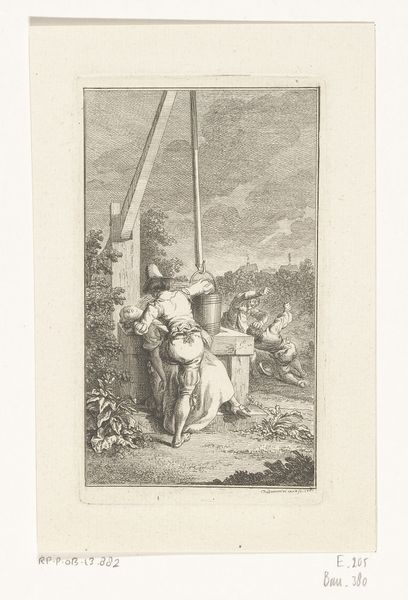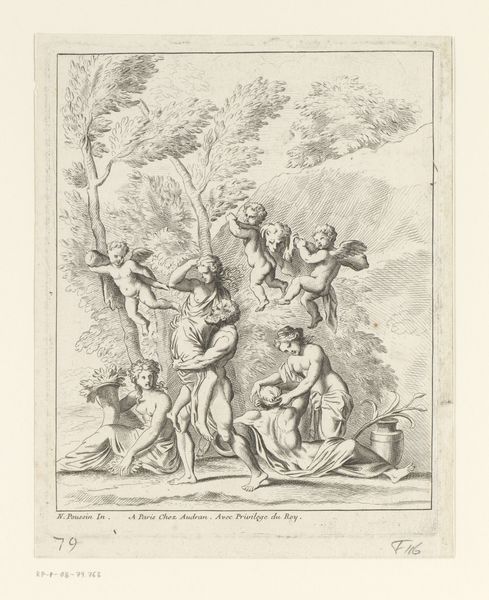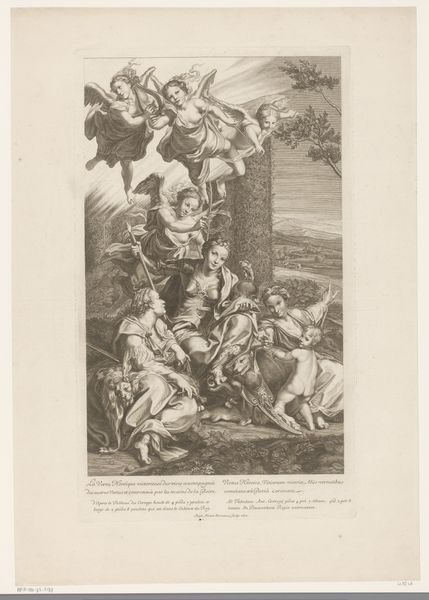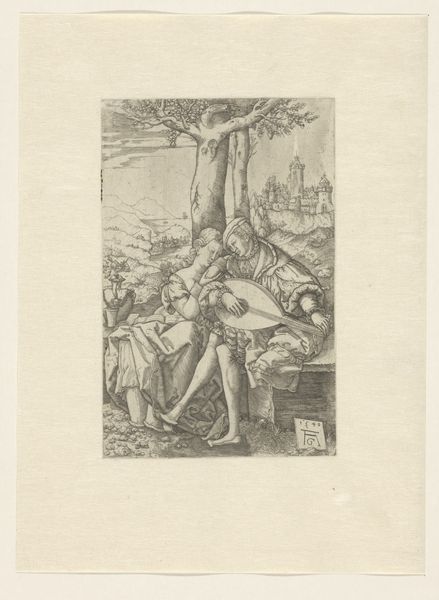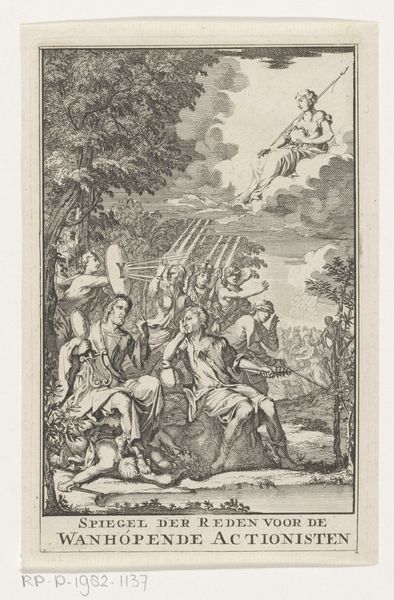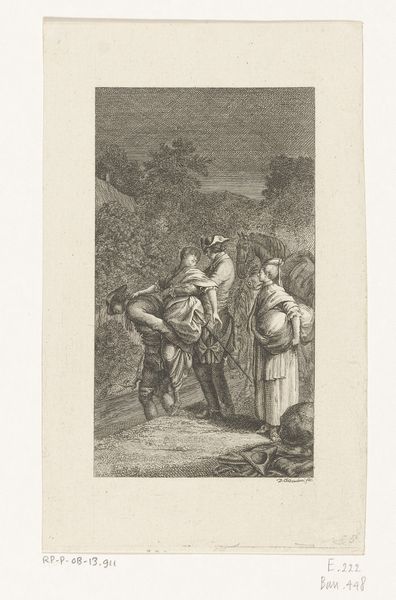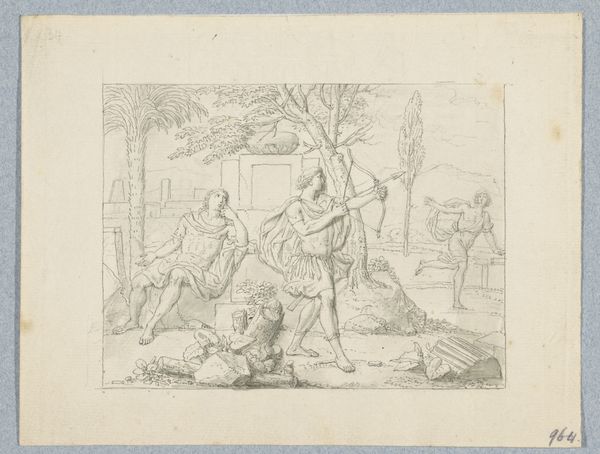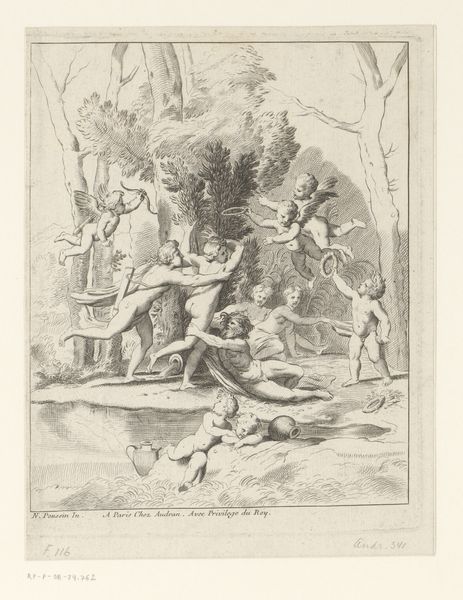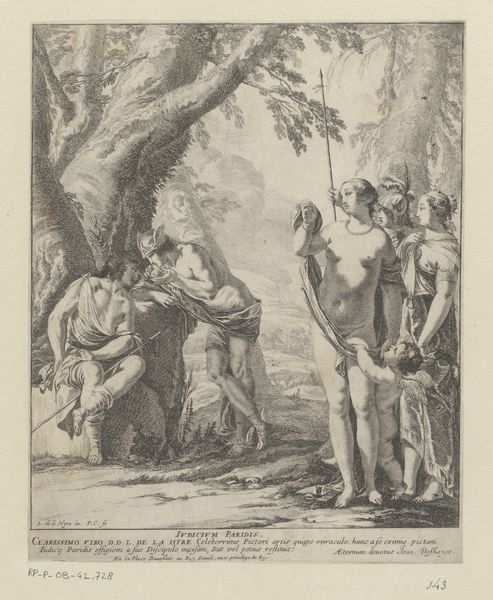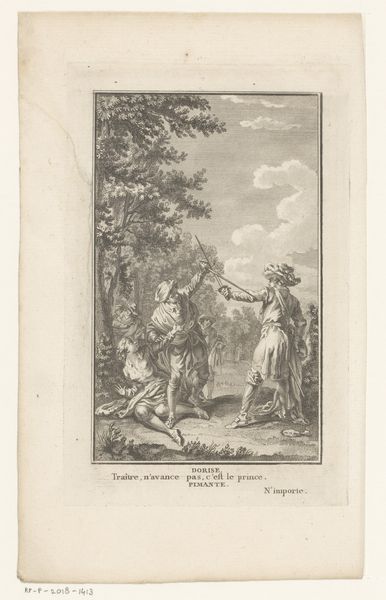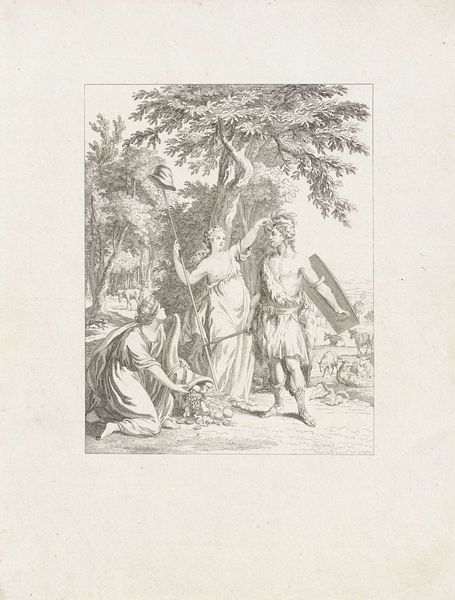
Dimensions: height 276 mm, width 183 mm
Copyright: Rijks Museum: Open Domain
Curator: This etching from 1884, entitled "Kruisiging van Petrus" or "Crucifixion of Saint Peter", is by the Belgian artist Jean Théodore Joseph Linnig. What strikes you initially about this image? Editor: Well, beyond the obvious subject matter, the thing that jumps out is the stark, almost brutal quality of the lines. It's unsettling, a truly gruesome scene depicted with unsettling detail. You feel the weight of the wood, the strain on the executioners. Curator: It's certainly a raw portrayal. Etching allows for that intense detail and fine line work, doesn’t it? Considering this print’s historical context, we need to examine how prints like this were circulated and consumed in the late 19th century. Editor: Absolutely. I am also compelled to notice how the composition, despite its apparent chaos, directs the viewer’s eye toward Peter. The historical setting – presumably, this references Peter's execution in Rome – immediately invites discussions of early Christianity and the power dynamics between the Roman Empire and this new religious movement. Curator: It speaks to the power of visual storytelling. And from a materialist perspective, prints like this, as reproductions, became incredibly important in disseminating imagery to a wider audience, impacting both religious and political sentiments. They offered a much cheaper alternative to painting. Editor: Indeed. And think of the socio-political messages embedded here. Crucifixion itself as a political tool of the Roman state against those deemed subversive, versus the rising symbolism it would acquire within a fledgling religious group soon to gain traction and challenge Roman power. It presents us with a turning point. Curator: The artistic labour, the choice of subject matter... Linnig engages directly with art historical precedents of depicting this scene but employs a different technique. Rather than grand paintings for elite patrons, these are etchings meant for broader consumption. It certainly reflects changing art markets and accessible art. Editor: This print becomes more than just religious art. It evolves into a historical document and commentary on social hierarchies, class, religion, and the changing roles of image production, all rendered through those stark lines and brutal realism. Curator: Ultimately, I believe this image resonates even today because it forces us to confront uncomfortable realities about power, belief, and the enduring legacy of historical events through the medium of printmaking. Editor: Agreed. And in that confrontation, we perhaps glimpse how the tools of empire become icons of faith through dissemination, a message captured within the layers of ink, paper, and history.
Comments
No comments
Be the first to comment and join the conversation on the ultimate creative platform.
